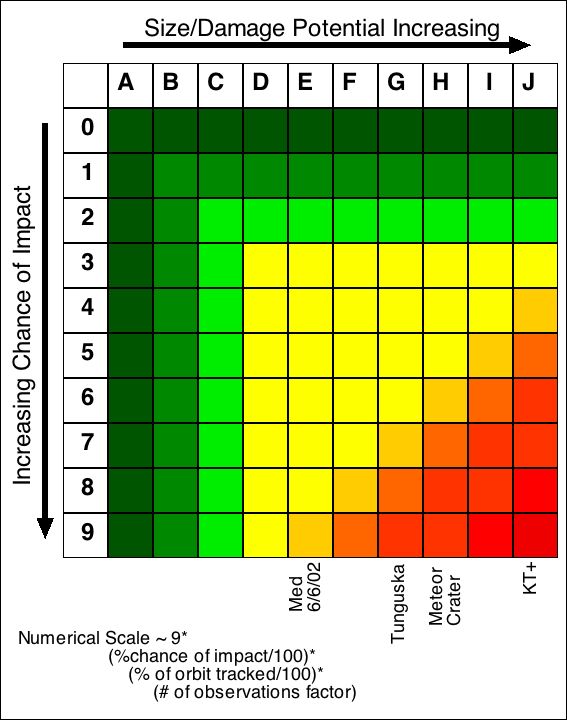|
The Torino Scale is reported as a ten-level scale, but it includes both chance of impact and level of devastation. Asteroids such as 2004
MN4 jump values. (As of Christmas Day, it rated a 4 on the scale, with the only additional values being 5 and 9). With this
scale, all asteroids would be assigned a damage potential as well as a chance of impacting. The number assigned for chance
of impact would depend on the number of observations as well as their spacing. My first thought is that the highest number
wouldn't be assigned until after an asteroids final "flyby" of an orbit-changing object.
Given the fact that the sample asteroids have already struck, their rating would be a '9' on the chance of impact scale.
KT would be a J9, etc. Given that 2004 MN4 is listed as having a regional impact, by this scale in its current form, it would
rate a letter I for size/damage potential, and probably on the order of a 4 for chance of impact, which is a pure guess at
this time. As I refine the model, I'll be able to give a better reading on the chance of impact rating.
This is a very preliminary idea right now, and I look forward to suggestions for improvement.
Added 27 Dec 04: The Palermo Scale is used on this website, although it is not meant for use in public distribution. It's basis is more of a statistical analysis of how the
asteroid in question provides a threat compared to the normal threat level. It also takes devastation potential into account.

Update as of 30 Dec 04
Let me know if you have any comments for improvement.
|

